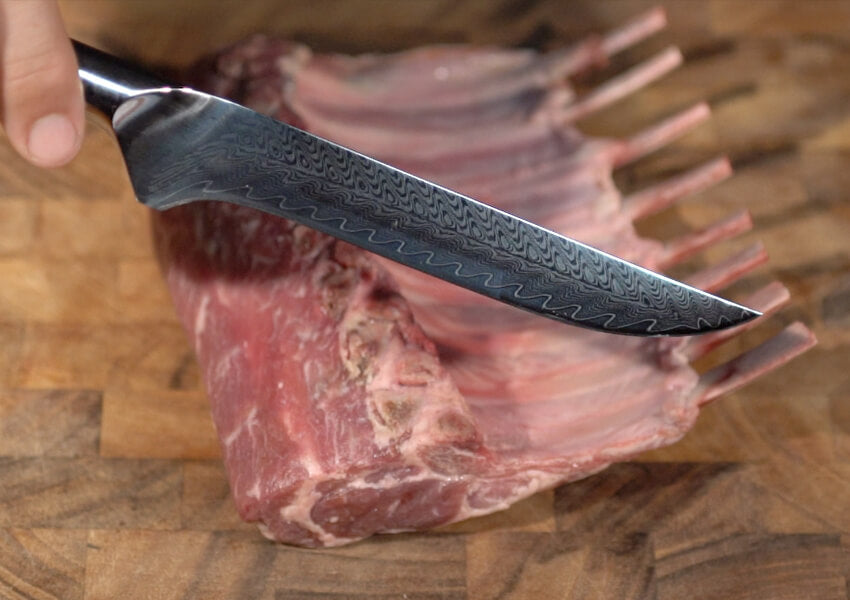When it comes to preparing and cutting meat, having the right tools is essential. Boning knives are specially designed for this purpose, and choosing between a curved vs straight boning knife can significantly impact your cooking experience. Each type of knife offers distinct advantages, and understanding these differences will help you make an informed decision. In this article, we’ll explore the uses, benefits, and differences between curved and straight boning knives, aiding you in selecting the perfect tool for your culinary needs.

Understanding Boning Knives
Boning knives are characterized by their narrow, flexible blades designed to separate meat from bones. They are indispensable in kitchens, especially when precision is required. These knives come in different styles, primarily curved and straight, each serving specific purposes.
What is a Curved Boning Knife?
A curved boning knife features a blade that arcs upwards, allowing for increased maneuverability around bones and joints. This design is particularly useful for delicate tasks and is often preferred by chefs for processing fish and poultry.
What is a Straight Boning Knife?
The straight boning knife has a flat, linear blade. This shape is ideal for cutting through larger pieces of meat and making straight, precise cuts. It’s favored for beef and pork processing.
Key Differences Between Curved and Straight Boning Knives
Blade Flexibility
Curved blades typically offer more flexibility, which is beneficial for intricate tasks like filleting fish. In contrast, straight blades provide more control for slicing through tougher cuts.
Precision and Control
While both knives offer precision, the curved knife excels in following the contour of bones, whereas the straight knife is better for straight cuts and larger meats.
Ease of Use
Beginners might find the straight knife easier to handle due to its straightforward design. Curved knives, however, require more skill but deliver superior results in skilled hands.
Applications for Curved Boning Knives
Fish Filleting
The flexibility and curve of the blade make it perfect for removing fish bones and skin.
Poultry Processing
Curved knives are excellent for maneuvering around joints and removing skin from poultry.
Applications for Straight Boning Knives
Beef and Pork Processing
These knives are ideal for cutting through large, tough cuts of beef and pork, offering clean and precise slices.
General Butchering
A straight boning knife is a versatile tool for general butchering tasks, making it a staple in many kitchens.
Choosing the Right Boning Knife for Your Needs
When deciding between a curved and straight boning knife, consider your specific needs. If you’re frequently working with fish or poultry, a curved knife might be more beneficial. For those handling larger cuts of meat, a straight knife could be more practical.
Maintenance and Care
Sharpening Your Boning Knife
Regular sharpening is crucial to maintain the knife’s effectiveness. Use a sharpening stone or honing steel.
Proper Storage
Store your boning knives in a knife block or magnetic strip to protect the blades and ensure safety.

FAQs
Which boning knife is better for beginners?
Beginners may find the straight boning knife easier due to its straightforward design and control.
Can I use a boning knife for vegetables?
While boning knives are designed for meat, they can be used for cutting vegetables, though not ideal.
How often should I sharpen my boning knife?
It’s best to sharpen your boning knife every few months, depending on usage.
For more insights on boning knives, visit this guide. For a detailed comparison, check out this article.
For more information on knife safety and cutting techniques, explore this page or learn about the role of knives in professional kitchens here.
Additionally, understand more about how to handle and maintain your knives for optimal performance in our safety tips section.
This article contains affiliate links. We may earn a commission at no extra cost to you.


